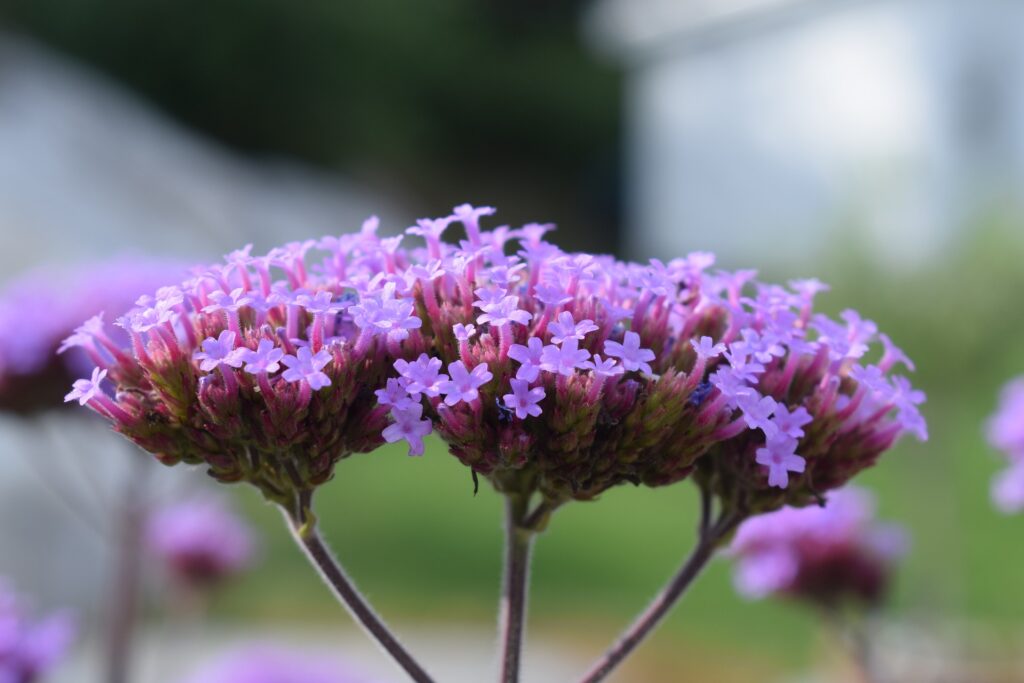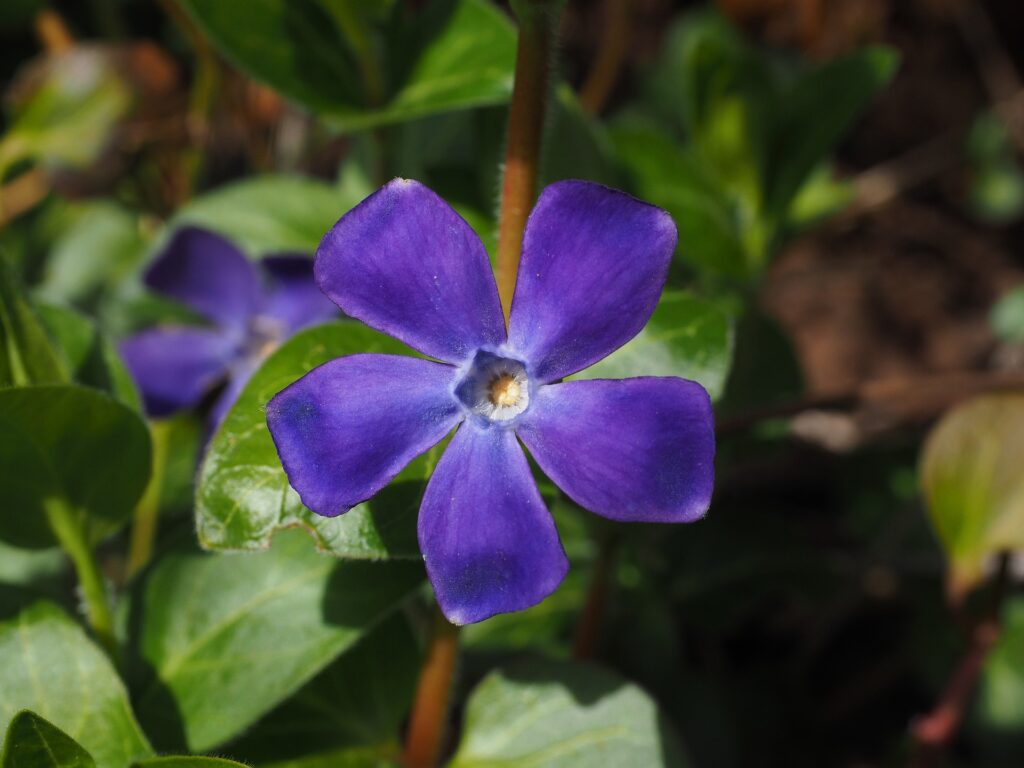Flowers are a beautiful representation of the natural world, and learning about them is a noble pastime. Flowers bring joy in times of sadness and brighten up homes and gardens. Not only do flowers look beautiful, they are also given wonderful fragrances that excite the senses. Here we have listed beautiful flowers Flowers that start with V.

Making flowers a part of your life not only brings the outside i, but it also offers health benefits too. Flowers can aid relaxation, increase energy, help memory and even assist in managing symptoms of colds and flu. So, let’s look at some popular flowers, beginning with V.
1. Viburnum
Viburnums are large flowering shrubs with unique foliage and pretty flowers. They are evergreen with white or pink flowers and bloom in early spring.

The Viburnum is also known as a cranberry bush and are mostly grown for ornamental reasons as they look beautiful against large green plants for hedges. They are particularly popular for their intoxicating aroma.
If you decide to grow these special plants then ensure they are watered during dry periods and planted in full sun, although many tolerate shade quite well. The viburnum is a sturdy, tough plant that can withstand all weathers, drought, and most climates once it is established.
2. Virginia Spiderwort
The Virginia Spiderwort, also known as Spider Lily, is native to Eastern parts of the US, and is a herbaceous flowering plant that flowers during the early spring. It is easy to grow and will thrive in all types of gardens but can also be found in roadsides or railways. It can adapt to many types of soil, but grows best when soil is moist.

This perennial typically grows up to 3 feet (0.91 m). It has slender and tubular stems that alternate as they branch out. The leaves are angular and narrow with blue and purple colored flowers. Some species produce white flowers and each flower has 3 petals.
3. Viola
Viola is similar to Violet, as it is also part of the Violaceae family. This flowering plant has about 600 species, and is native to the Northern Hemisphere and found in Australia, Hawaii, Asia, and the Andes. In addition, it can be annual or perennial.

Viola flowers have a unique shape, with their heart forming the shape of a kidney. They have 5 petals, 2 each side, and are fan-shaped. Most petals are colored violet or blue, but some varieties are multicolored. Experts say that each Viola has its own special face!
Most Violas bloom in the cooler weather. Planting will depend on climate, and it’s useful to read details about the particular species before growing.
4. Valerian
Valerian is a perennial plant and is used extensively to aid sleep and relaxation. It has unique tiny florets of bright pink and blooms late spring to late summer. It also creates lots of seeds that germinate when spread over the garden. Furthermore, it is a particular favorite with butterflies.

Valerian is native to Europe and Asia and Asia. The plant is very common in Finland and belongs to the honeysuckle family. It also goes by the name of Heliotrope or Garden All-Heal.
The plant reaches up to 5 feet (1.52 m) and when in blossom it produces clusters of white or pale pink small flowers that are a charming addition to any outside space. The flowers are so fragrant and are very attractive to pollinators.
5. Vetchling
Vetchlings are members of the pea family and are found growing in grassy areas such as hedges, meadows, road verges and banks. They produce clusters of flowers on long stems that are bright yellow. Typically, about 15-18 mm and also have a seed pod that’s black and around 35 mm long.

Vetchlings are found in the UK and are best when in flower around May to August. They are often referred to as ‘scrambling’ as they climb over other plants and use them for support. They can sometimes reach as tall as a meter in hedgerows.
6. Vervain
Vervains are a humble little wildflower commonly found on wastelands. It is tall with a spindle shape and can reach 50 cm. It has small tubular-like flowers that grow on spikes of its branches. The leaves are reminiscent of oak trees and have an easy to identify vein in the center.

Vervains can be found in Wales and England, in mostly southern areas. They are generally found around chalky grasslands and sometimes near roads and coastal areas.
7. Violet
Violets are a common flower and smell glorious. They are from the Violaceae family and are native to the Northern Hemisphere. Wild violets are pretty hardy and need very little intervention. They have sweetheart shaped leaves with blue purple flowers, although there are some varieties that have yellow or white flowers.

They are mostly classed as biennials or annuals but they often self seed and come back year after year. The flowers appear low on the plant which allow them to easily reproduce, so if growing in gardens it’s crucial they are controlled with a barrier of some kind. Apart from that they are really easy to grow and look beautiful near water, trees or used as bedding plants. It’s also possible to grow them in containers.
8. Verbena
Verbenas are vibrant annuals and bloom all through summer making them a great choice for gardens. Their violet color adds life to the garden and can be grown in flower beds, hanging baskets, or window boxes. This is super easy to take care of and tolerates dry periods and summer droughts. They will bloom from May right through until October.

They need full sun and well drained soil to thrive, and their spread and height will vary depending on variety. Some grow low to the ground, whilst others grow more upright. They attract a wealth of wildlife including bees, hummingbirds, and butterflies; a fantastic addition to a pretty garden.
9. Vinca Minor
The vinca minor is a strong, pest free, generally low maintenance plant. It is also known as the periwinkle and offers gorgeous flowers and broadleaf foliage.

The plant’s creeping ability makes it a popular plant to use as ground cover. It flowers in spring and usually produces a blue flower, but sometimes they are white or purple. It has medium growth with the most spectacular displays during the spring, although you will still see flowers blooming in summer.
The plants typically grow 3-6 inches high and 18 inches (ca. 46 cm) long. They are great for covering large areas and flattening or eliminating weeds. The plants love shady conditions so ensure they are not exposed to direct sunlight for an extended period of time.
10. Viper’s Bugloss
This plant is part of the Boraginaceae family. Its name is due to the spikes of fascinating blue flowers that grow down a long stalk with narrow leaves. It is generally found amongst sand dunes, grasslands, and cliffs. It has a long flowering time from May to September.

The plant is a source of food for many insects such as butterflies, honey bees, red-tailed bumblebees and red mason bees. Interestingly, the plant was once used as anti venom to treat bites from a spotted viper.
11. Virginia Sweetspire
This plant is a deciduous shrub that has arching stems and simple leaves. It is oval with a dark green shade. It produces drooping cylindrical flowers from around late spring through to the middle of the summer.

Virginia sweetspire is native to North America and makes lovely woodland borders. It can grow fast in the right conditions and provide a good solution for erosion control. It flowers throughout the Autumn with beautiful leaf colors of orange, gold, and red.
12. Variable Leaved Sea Holly
This plant is native to North Africa and is a perennial with unique blue gray flowers and marble type foliage. It grows to around 40 cm high and clump with its rounded leaves and white veins. It produces stems that are leafy and a blue silver flower and narrow bracts.

The Variable Leaved Sea Holly is best grown to use in beds and borders and rock gardens in a sandy, chalky or loamy soil in full sun.
13. Virgin’s Bower
The virgin’s bower is native to North America and Mexico. It is part of the clematis family and thrives in light conditions. It is a deciduous vine and can be found amidst woodlands, moist lowlands and by streams and ponds. Furthermore, it also has the ability to spread along the ground, forming excellent ground cover. The plant prefers fertile, rich, silty or loamy soil that must be kept moist.

If you enjoy a bit of wildness in your garden, then this plant is a great addition and can grow nicely against fences or trellises. The delicate white flowers are attractive to lots of different wildlife, making your garden alive and thriving.
A garden full of flowers is a happy garden, making a wonderful space to spend time and enjoy relaxation amongst nature. So fill up your garden and experiment with different combinations, you’ll be surprised what you can achieve. Happy gardening!
We hope you learned something from this article, here are other articles that you can learn from:
33 Awesome Burgundy Flowers (Including Pictures)







